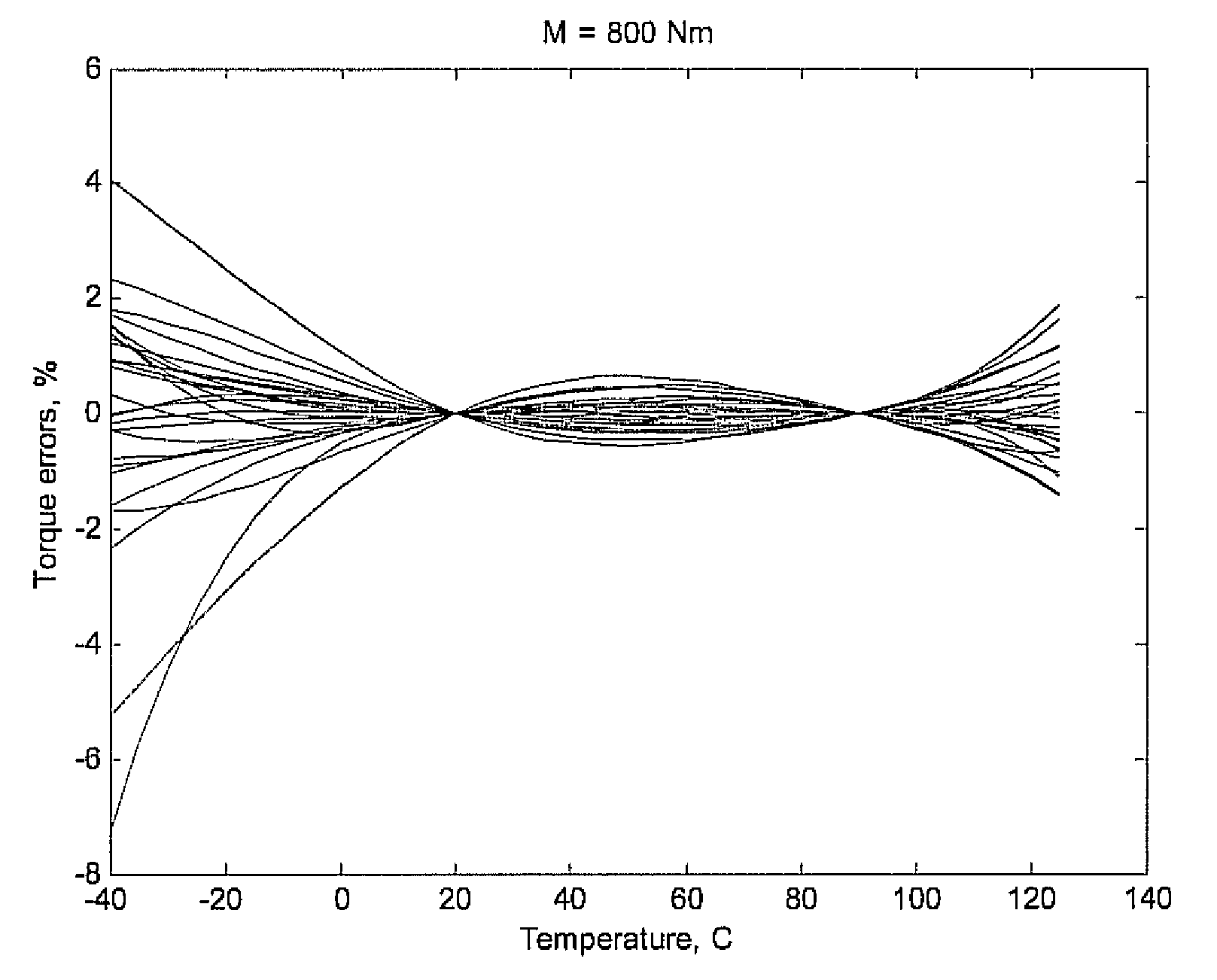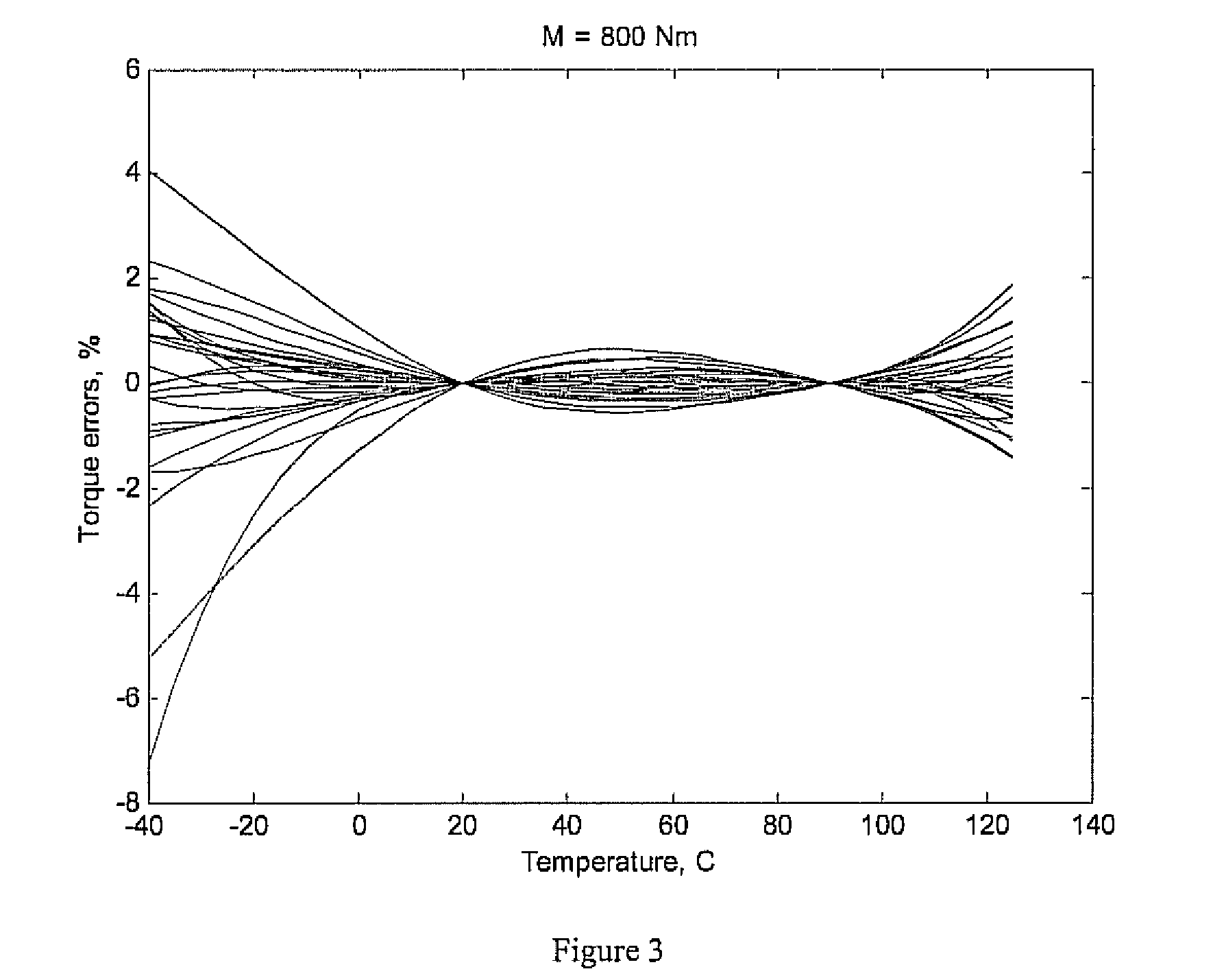Method of calibrating temperature compensated sensors
- Summary
- Abstract
- Description
- Claims
- Application Information
AI Technical Summary
Benefits of technology
Problems solved by technology
Method used
Image
Examples
Embodiment Construction
[0021]The steps of a calibration method embodying the invention are described hereinafter in connection with temperature calibration of a SAW based sensor, although it will be understood that the method can also be used for calibrating other parameters effecting readings from a sensor and / or other types of sensor.
[0022]After developing a high-volume fabrication process for a particular type of a sensor the sensor manufacturer produces and calibrates the first batch of sensors (say, 100 devices to be statistically representative) within the full range of temperatures from Tmin to Tmax in a sufficiently large number of temperature intervals (typically 5 to 10 discrete points).
[0023]This is achieved in practice by heating up or cooling down each individual sensor to a required calibration temperature point Ti (i=1 . . . N) and taking the two readings, Fm and Ft, at a number of predefined values of measured torque value M. In the case of the model described by Eqs. (3) and (4), only thr...
PUM
 Login to View More
Login to View More Abstract
Description
Claims
Application Information
 Login to View More
Login to View More - R&D
- Intellectual Property
- Life Sciences
- Materials
- Tech Scout
- Unparalleled Data Quality
- Higher Quality Content
- 60% Fewer Hallucinations
Browse by: Latest US Patents, China's latest patents, Technical Efficacy Thesaurus, Application Domain, Technology Topic, Popular Technical Reports.
© 2025 PatSnap. All rights reserved.Legal|Privacy policy|Modern Slavery Act Transparency Statement|Sitemap|About US| Contact US: help@patsnap.com



